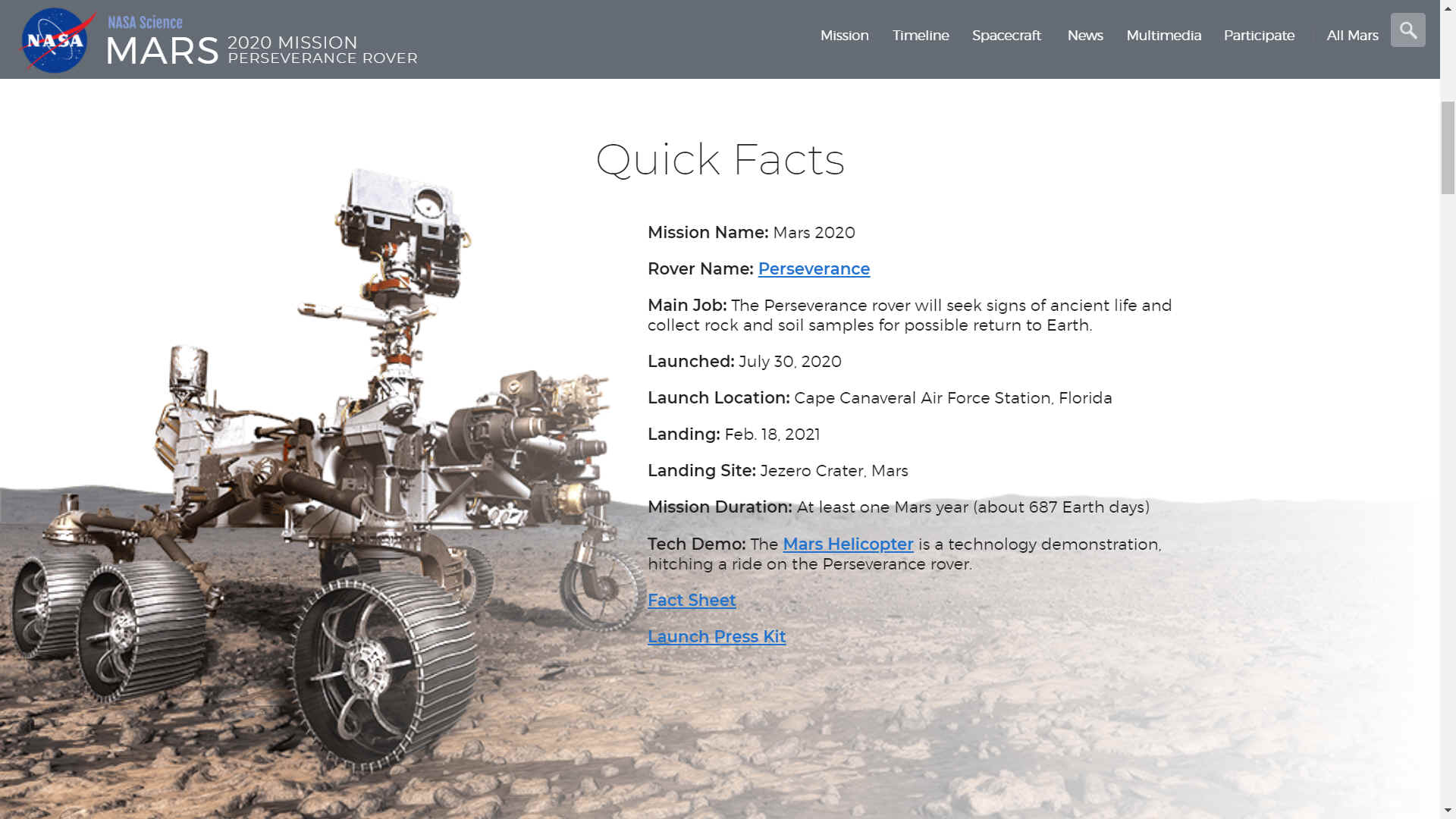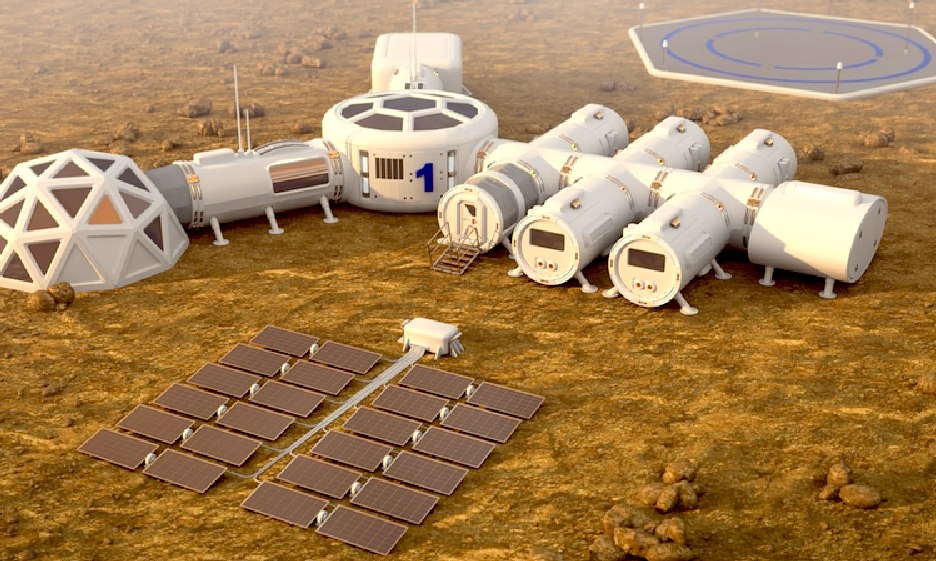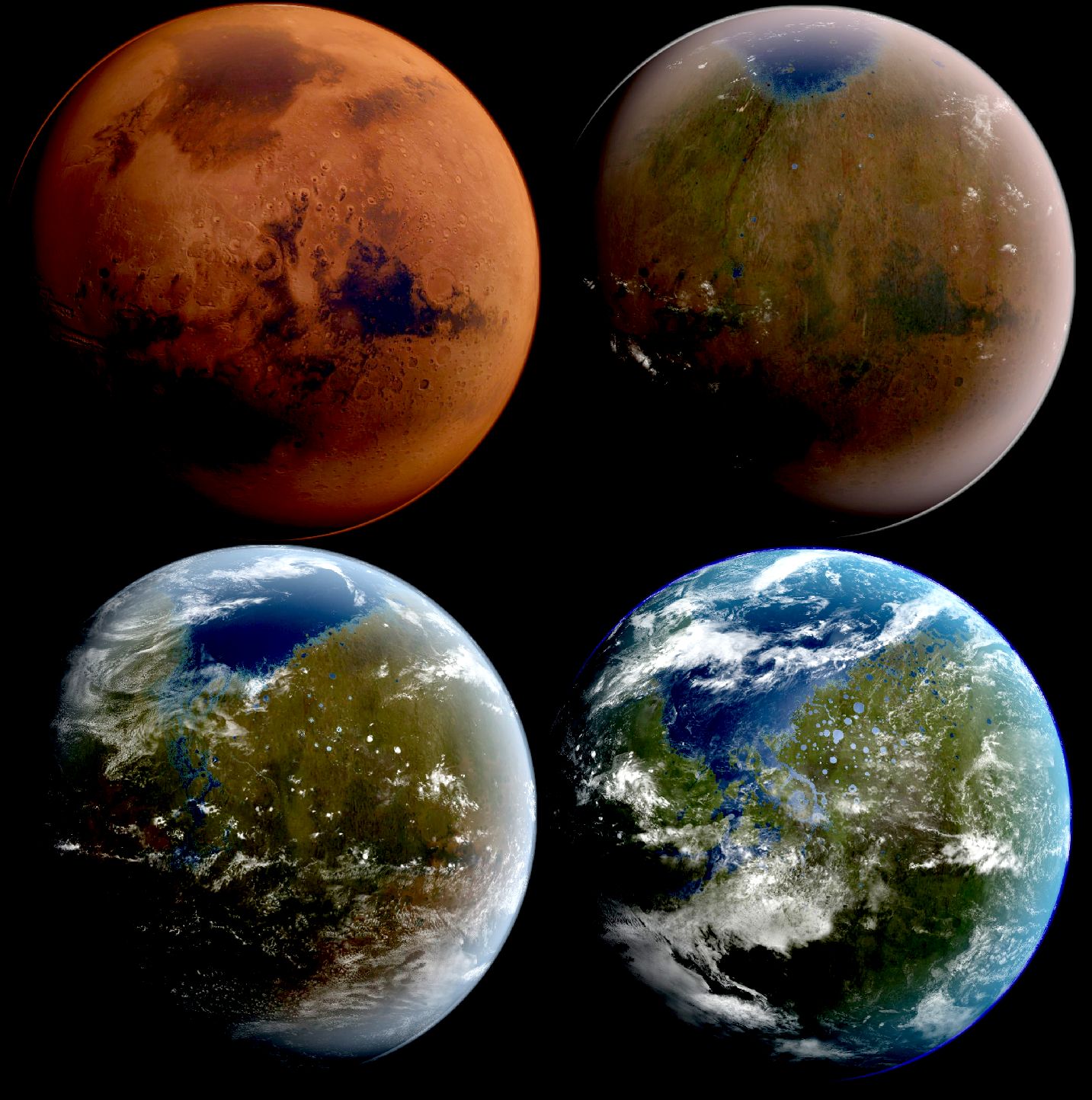|

Percy
(perseverance) is a planetary rover that contains a very sturdy body to
protect the rovers vital organs. The job of this robot is to look for
signs of ancient life and collect soil samples for possible return to
earth. With this information, we might be able to figure out how to make
use of the planet, But should we be considering such a thing? If we look
at history, most of Europe have set out to colonize
the Americas, with Britain being quicker off the mark concerning Australia.
Mars
is inhospitable to humans, but is now part of the race to extend
theoretical territory, or at least achievement, despite international
agreement to the contrary. But what if we did manage to establish a
colony. Would they decide to make their own rules? Politically speaking, one of the concerns with colonizing Mars is how civil laws and culture would be established in a Martian colony.
In 1967, the
United Nations created the “Treaty on Principles Governing the Activities of States in the Exploration and Use of Outer Space, Including the Moon and Other Celestial Bodies.” This treaty stipulates that “no country may take claim to space or its inhabitants.” Since colonizing Mars would present such dangerous and challenging obstacles to human life, it is assumed that community laws on the Red Planet would likely be quite different from those on Earth.
INDEPENDENT
- SPACE RACE
According
to the Independent (08-08-2021) we are on the brink of a new space race – and this time, Mars is in our sights. Yet we still have the opportunity to discuss now, before anyone puts their boot on the ground, what we want to do with the planet. Should we go there at all, and risk annihilating any potential Martian life? Do we want to preserve it for scientific exploration only? Do we want to use it as a test bed for future space technologies? Or do we want to claim it and exploit it, planting permanent, self-sustaining colonies in its red dust?
The Outer Space Treaty (OST), signed during the Cold War in 1967 and ratified by all the space-faring countries, is quite clear on two regards: no one country can own an extraterrestrial object, in part or as a whole, and that all of outer space – everything not of the Earth – is held in common for the benefit of everybody. Arguably, the OST’s assumption that we are the masters of our own solar system and potentially beyond, is an act of hubris. But Mars is in our celestial backyard. If anyone gets to decide its fate, it’s going to be us.
The presenting problem is that Mars is a very long way away, and any crewed mission will be at the end of the most precarious supply line in history. Food, fuel,
water, air, tools, spare parts – everything – needs to be taken along or sent in advance. It’s incredibly expensive to do that, and the pressure to cut the costs, as well as the risk, is intense. Which is why future planned missions to Mars rely heavily on the anodyne-sounding practice of In Situ Resource Utilisation.
Water is heavy and incompressible – but Mars is already rich with water ice. Oxygen can be cracked from the
carbon dioxide that is most of Mars’s atmosphere. Fuel for the return journey can be synthesised by combining the water and the
oxygen. Even the habitats the astronauts live in, however temporarily, are better made from thick mounds of Martian soil to protect the fragile occupants from the constant, cancer-inducing radiation.
Perhaps no one would begrudge Mars’s first visitors such a boon, water, fuel and air being vital for their survival. But what would the status of a permanent base be, digging up more of the Martian surface, excavating more of its ice, using chemicals found there as feedstock for manufacturing vital – always vital – parts, or mining the rock for metal ores? One base will become a network of settlements, and at what point do we call them a colony? When does using the commons for survival become misusing them for private gain?
Although the OST came without any meaningful enforcement, it could have an unexpected, and growing, part to play in our future – if we show enough collective will and insist that its signatories honour it. When it comes to protecting Mars, we could do far worse than to look to the governance of the Antarctic Treaty, in place since 1961. That treaty has saved that continent for science, setting aside territorial claims, preventing economic activity and militarisation. Oversight committees representing all the interested nations arbitrate disputes and coordinate activity, based on consensus and legally binding obligations to each other.
Because it’s almost inevitable that if we do nothing, the default will be a chaotic and exploitative land grab – not today, not tomorrow, but soon enough. In a hundred years time, our grandchildren and great-grandchildren will look back and wonder at the poor choices we made now.
By Simon Morden

Science fiction literature is brimming with content about terraforming—the process of creating a habitable planet like Earth. From The War of the Worlds by HG Wells to The Martian Way by Isaac
Asimov, people have long been fascinated by this idea.
Of the eight major planets in our solar system, Mars seems to be the best bet for terraforming. Why? Well, quite simply, Mercury and Venus are too hot for a spacecraft to survive, let alone humans. The Jovian planets—Jupiter onwards to Neptune—are gas planets, which means they don’t even have solid ground to put our feet on! Clearly, Mars seems to be a better choice.
CAN
WE TERRAFORM MARS?
Science fiction writers have long featured terraforming, the process of creating an Earth-like or habitable environment on another planet, in their stories. Scientists themselves have proposed terraforming to enable the long-term colonization of Mars. A solution common to both groups is to release carbon dioxide gas trapped in the Martian surface to thicken the atmosphere and act as a blanket to warm the planet.
However, Mars does not retain enough carbon dioxide that could practically be put back into the atmosphere to warm Mars, according to a new
NASA-sponsored study. Transforming the inhospitable Martian environment into a place astronauts could explore without life support is not possible without technology well beyond today’s capabilities.
Although the current Martian atmosphere itself consists mostly of carbon dioxide, it is far too thin and cold to support liquid water, an essential ingredient for life. On Mars, the pressure of the atmosphere is less than one percent of the pressure of Earth’s atmosphere. Any liquid water on the surface would very quickly evaporate or freeze.
Proponents of terraforming Mars propose releasing gases from a variety of sources on the Red Planet to thicken the atmosphere and increase the temperature to the point where liquid water is stable on the surface. These gases are called “greenhouse gases” for their ability to trap heat and warm the climate.
“Carbon dioxide (CO2) and water vapor (H2O) are the only greenhouse gases that are likely to be present on Mars in sufficient abundance to provide any significant greenhouse warming,” said Bruce Jakosky of the University of Colorado, Boulder, lead author of the study appearing in Nature Astronomy July 30.
Although studies investigating the possibility of terraforming Mars have been made before, the new result takes advantage of about 20 years of additional spacecraft observations of Mars. “These data have provided substantial new information on the history of easily vaporized (volatile) materials like CO2 and H2O on the planet, the abundance of volatiles locked up on and below the surface, and the loss of gas from the atmosphere to space,” said co-author Christopher Edwards of Northern Arizona University, Flagstaff, Arizona.
The researchers analyzed the abundance of carbon-bearing minerals and the occurrence of CO2 in polar ice using data from NASA’s Mars Reconnaissance Orbiter and Mars Odyssey spacecraft, and used data on the loss of the Martian atmosphere to space by NASA’s MAVEN (Mars Atmosphere and Volatile Evolution) spacecraft.
“Our results suggest that there is not enough CO2 remaining on Mars to provide significant greenhouse warming were the gas to be put into the atmosphere; in addition, most of the CO2 gas is not accessible and could not be readily mobilized. As a result, terraforming Mars is not possible using present-day technology,” said Jakosky.
Although Mars has significant quantities of water ice that could be used to create water vapor, previous analyses show that water cannot provide significant warming by itself; temperatures do not allow enough water to persist as vapor without first having significant warming by CO2, according to the team. Also, while other gases such as the introduction of chloroflorocarbons or other fluorine-based compounds have been proposed to raise the atmospheric temperature, these gases are short-lived and would require large-scale manufacturing processes, so they were not considered in the current study.
The atmospheric pressure on Mars is around 0.6 percent of Earth’s. With Mars being further away from the Sun, researchers estimate a CO2 pressure similar to Earth’s total atmospheric pressure is needed to raise temperatures enough to allow for stable liquid water. The most accessible source is CO2 in the polar ice caps; it could be vaporized by spreading dust on it to absorb more solar radiation or by using explosives. However, vaporizing the ice caps would only contribute enough CO2 to double the Martian pressure to 1.2 percent of Earth’s, according to the new analysis.
Another source is CO2 attached to dust particles in Martian soil, which could be heated to release the gas. The researchers estimate that heating the soil could provide up to 4 percent of the needed pressure. A third source is carbon locked in mineral deposits. Using the recent
NASA spacecraft observations of mineral deposits, the team estimates the most plausible amount will yield less than 5 percent of the required pressure, depending on how extensive deposits buried close to the surface may be. Just using the deposits near the surface would require extensive strip mining, and going after all the
CO2 attached to dust particles would require strip mining the entire planet to a depth of around 100 yards. Even CO2 trapped in water-ice molecule structures, should such “clathrates” exist on Mars, would likely contribute less than 5 percent of the required pressure, according to the team.

Carbon-bearing minerals buried deep in the Martian crust might hold enough CO2 to reach the required pressure, but the extent of these deep deposits is unknown, not evidenced by orbital data, and recovering them with current technology is extremely energy intensive, requiring temperatures above 300 degrees Celsius (over 572 degrees Fahrenheit). Shallow carbon-bearing minerals are not sufficiently abundant to contribute significantly to greenhouse warming, and also require the same intense processing.
Although the surface of Mars is inhospitable to known forms of life today, features that resemble dry riverbeds and mineral deposits that only form in the presence of liquid water provide evidence that, in the distant past, the Martian climate supported liquid water at the surface. But solar radiation and solar wind can remove both water vapor and CO2 from the Martian atmosphere. Both MAVEN and the European Space Agency’s Mars Express missions indicate that the majority of Mars’ ancient, potentially habitable atmosphere has been lost to space, stripped away by solar wind and radiation. Of course, once this happens, that water and CO2 are gone forever. Even if this loss were prevented somehow, allowing the atmosphere to build up slowly from outgassing by geologic activity, current
out-gassing is extremely low; it would take about 10 million years just to double Mars’ current atmosphere, according to the team.
Another idea is to import volatiles by redirecting comets and asteroids to hit Mars. However, the team’s calculations reveal that many thousands would be required; again, not very practical.
Taken together, the results indicate that terraforming Mars cannot be done with currently available technology. Any such efforts have to be very far into the future.
This research was supported in part by NASA through the MAVEN and Mars Odyssey THEMIS (Thermal Emission Imaging System) projects.
By Bill Steigerwald / Nancy Jones
SPACEX
- ELON MUSK
Elon Musk’s SpaceX program is operating based on a timeline that aims to establish a colonizing presence by 2023. NASA isn’t far behind, with a goal of getting humans on Mars by the 2030s.
To deal with the lack of oxygen on Mars, NASA has developed MOXIE — the Mars Oxygen In-Situ Resource Utilization Experiment. In 2020, a Mars rover will be sent to the Red Planet equipped with a fuel cell capable of performing electrolysis — the separation of carbon and oxygen carbon dioxide molecules. If successful, this experiment would allow oxygen to be produced from the carbon-dioxide atmosphere of Mars.
NASA also has teamed up with the University of Arizona to develop the Mars Lunar Greenhouse, a bioregenerative life support system (BLSS) that uses plants to create a sustainable existence by providing food, oxygen, water recycling, and waste recycling.
Other organizations, such as Mars One, have also been working on their own initiatives. Mars One’s Life support units are designed to use natural Martian resources in order to create a livable environment. One feature, for example, involves the use of photovoltaic panels to capitalize on the solar radiation that shines on Mars in order to generate electricity.
LINKS
& REFERENCE
https://www.nasa.gov/press-release/goddard/2018/mars-terraforming
https://www.nasa.gov/
|


